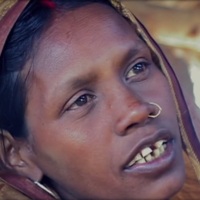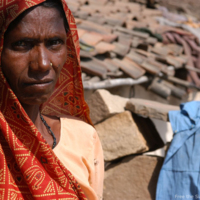
At first I only worked eight hours a day but soon we were made to work overtime without pay. We were not allowed a break and had to get permission from the supervisor even to go to the toilet.
Twelve of us slept in a small room and there was only one toilet and bathroom for all workers stayed in the hostel. We were given really poor food. The rice was dirty and we would find insects in it. Workers preferred to starve than eat that. We had to work with an empty stomach on most days.
Narrative provided by Anti-Slavery International from their report ‘Slavery on the High Street: Forced Labour in the manufacture of garments for international brands’, June 2012.









